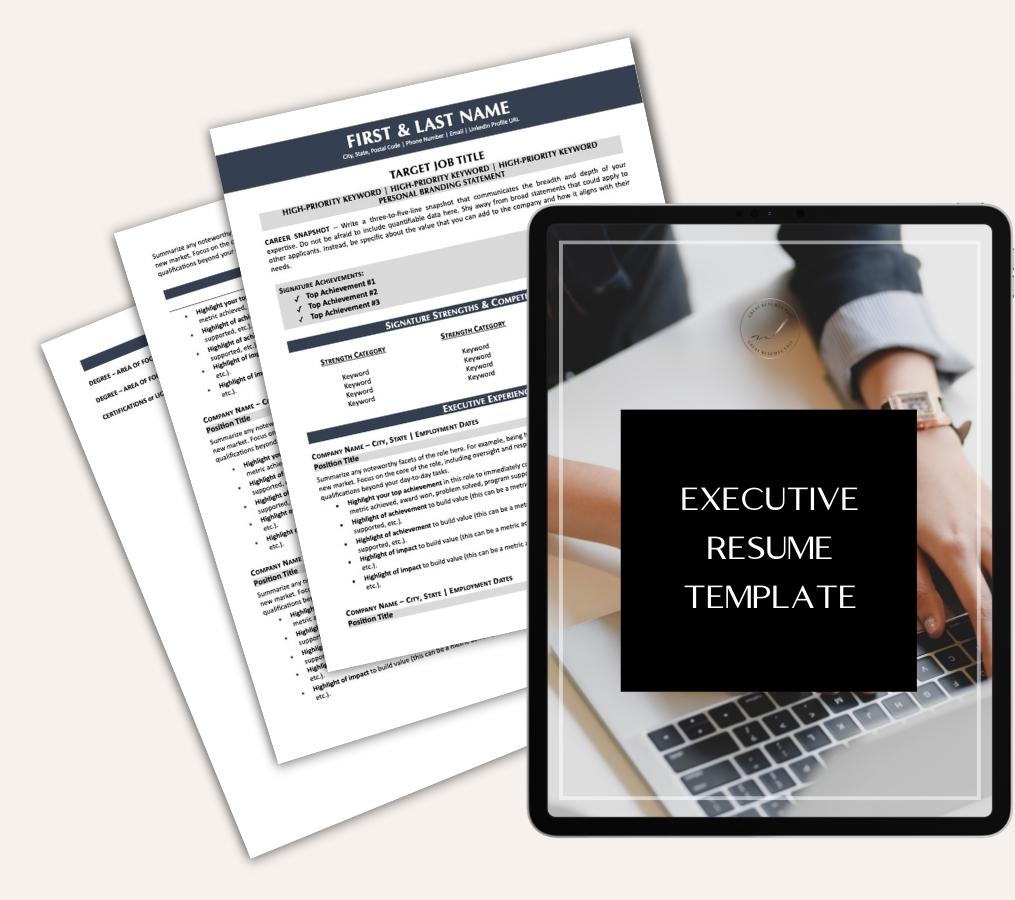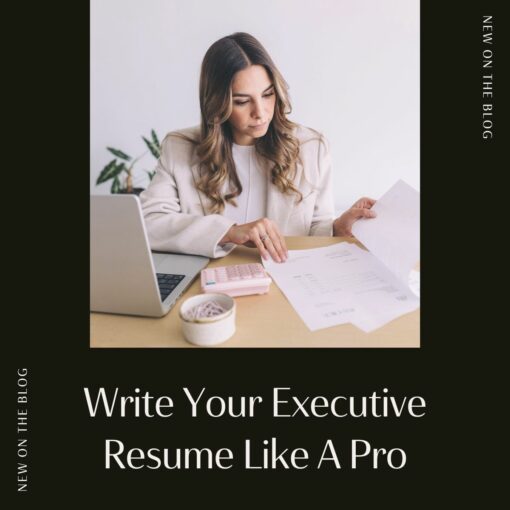LinkedIn Profiles and Your Executive Resume – What’s the Difference?
Guest post from Laura Smith-Proulx
There’s no doubt about it: LinkedIn is one of the greatest job search tools available today. Not only can you “advertise” your availability and display career endorsements, but being viewable on LinkedIn is a boon to executive recruiters that may need your skills.
However, building an effective online profile is something few people address in detail. You may spend hours preparing your resume, only to be confused about which components to use when building a Web presence.
Here, I’ve outlined some key differences to be aware of when building both your executive career marketing documents and a profile that can get you noticed–and HIRED:
1 – Don’t just dump your resume into LinkedIn without modifications.
Even if you wanted to add your entire resume (and see the next point for reasons to avoid doing so), LI contains specific character limits that you must heed. This is where looking at your resume for ideas will help (assuming that it is written correctly and reflects your executive brand). Think of your LI profile as a Web site, and you’ll have the right idea. Most online and resume writing styles use sentence fragments, which you can lift to fit into defined text areas on LI. However, I recommend putting together a strategy first that allows you to build the profile without just popping it into LI. Instead, write out sections using Microsoft Word at first, keeping an eye on the character counts. Check document Properties and then Statistics to get this information. This method will allow you to both proofread and tweak the copy prior to inserting it into the profile.
2 – Be aware of Web space limitations and styles.
There are key differences between Web site information and what would appear on a traditional document. Your LI profile, when viewed as most people will read it, shows just a few pieces of information that must grab the reader’s attention quickly–or they won’t read further. If you think of the profile as being similar to the top, summarized section of a resume, you’ll have the right idea. Spend some time tuning your Name and Professional Headline, in particular. Between these, you have 160 total characters in which to express your brand. Contrary to popular belief, your Headline is NOT intended to be your current job title, unless you find this to be very descriptive of your status. Instead, I recommend adding a composite brand tagline and keyword-rich phrase that sums up your abilities and goals.
For example, “Director of Sales or Operations” might be “Sales and Operations Executive – Multi-Billion Dollar Producer & Six Sigma Green Belt,” while “Real Estate Developer” can be changed to “CEO and President | Real Estate Investment & Development.”
Beyond that, most readers will take a quick glance at some key points about you, including your executive career history, education, personal website or blog, number of connections, and any recommendations.
Keep the Summary and Experience sections limited to brief, bulleted descriptors of major achievements and the scope of your responsibility in various positions.
Remember that a LinkedIn profile expects input in basic text format, so this limits the type of characters you can use. Insert spaces as needed to preserve readability, and use asterisks or hyphens as bullet points.
3 – Keyword strategy is imperative.
You’ll notice that LI has some great categories that can be filled with keywords representing your brand, competencies, and skills.
This is where to unleash some creativity, as well as classic search engine optimization techniques.
The Summary, in particular, can be loaded with job titles that fit your goals. A real estate developer and investor, for example, could add “CEO, COO, President, Real Estate Investment Executive, Director of Real Estate Development, Operations Director, Asset Management Executive” in this area to reflect titles and positions of interest.
Again, tuning this section while being aware of space limitations is critical. Be sure that the achievements that you add contain keywords specifically related to your area of expertise and leadership brand.
In addition, the Specialties section can be used as a keyword list of specific skills commonly found in job descriptions that match your career goals.
To find keywords, review several job postings for positions related to your background, and insert these terms in a straight list, with line breaks between each word for readability.
In summary, you’ll find that much of your resume information CAN be used in LinkedIn.
However, it’s best to spend extra time tuning your online presence in order to build a great profile that supports your ultimate goals, leadership brand, and ultimate job search success.
| A unique executive resume writing authority, Laura Smith-Proulx, CCMC, CPRW, CIC, principal of An Expert Resume, has achieved a high success rate landing executive positions for her clients at Fortune-ranked companies. A credentialed and published resume writer, her work has been nominated for global excellence in personal branding techniques. |
Share this post:

About the author
Jessica Hernandez, President, CEO & Founder of Great Resumes Fast
Hi, I’m Jessica. I started this company back in 2008 after more than a decade directing hiring practices at Fortune 500 companies.
What started as a side hustle (before that was even a word!) helping friends of friends with their resumes has now grown into a company that serves hundreds of happy clients a year. But the personal touch? I’ve kept that.
You might have seen me featured as a resume expert in publications like Forbes, Fast Company, and Fortune. And in 2020, I was honored to be named as a LinkedIn Top Voice of the year!
I’m so glad you’re here, and I can’t wait to help you find your next perfect-fit position!
Improve Your Resume: Download Your Free Executive Resume Template Today
Are you struggling to create an executive resume that will impress employers? Download this free executive resume template and receive a series of 10 emails with expert guidance on how to write resume content that resonates with employers so you get more interviews.
It's everything you need to stand out, make an impression, and accelerate your job search.








